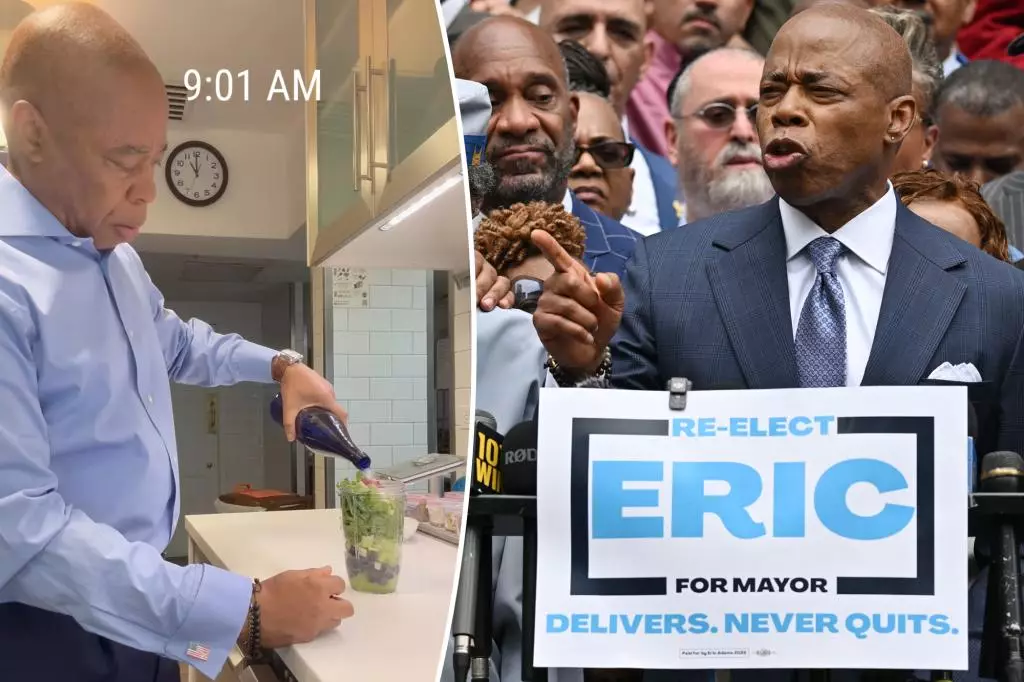In an era where authenticity and digital engagement shape public perception, New York Mayor Eric Adams has embraced a remarkable transformation in how politicians connect with their constituents. Rather than adhering to the conventional image of a polished, suit-clad public official delivering formal speeches, Adams ventures into the domain of social media influencers. His strategy is unconventional for a figure holding one of the most important political offices in the country: sharing everyday moments, engaging directly with citizens through casual videos, and weaving meme culture into his public persona. This shift signals a recognition that political leadership now demands a blend of approachability and visibility online—an arena once dominated by entertainers and lifestyle content creators.
Social Media as a Political Power Play
Adams’s intentional pivot demonstrates a savvy understanding that traditional media narratives often marginalize certain political voices and campaign messages. By bypassing legacy outlets and favoring digital platforms, he amplifies his voice, controlling how and what his audience sees firsthand. His emphasis on “Get Ready With Me” videos and mundane tasks such as ironing his own shirts shatter preconceived notions about politicians being detached elites. Instead, he positions himself as relatable and transparent. In his view, showing imperfection—smoking a cigar, enjoying a drink, or sharing candid moments—does not undermine authority; it humanizes it. This reflects a broader cultural shift demanding leaders to exhibit vulnerability and everyday realities to forge stronger emotional bonds with voters.
Authenticity or Performance? A Nuanced Balance
While Adams’s approach offers refreshing breaks from political stiffness, it also raises critical questions about the authenticity of such curated personas. The carefully designed life snippets, aimed to resonate with social media-savvy demographics, may blur the line between genuine self-representation and strategic image crafting. The viral appeal of such content can obscure substantive policy discussions, risking a culture where political success hinges on charisma and relatability rather than governance efficacy. Yet, the reality also shows that dispassionate, opaque leadership no longer commands public trust or attention. Adams’s blending of influencer tactics with political communication underscores the inevitable fusion of entertainment and governance in the digital age.
Confronting Controversy Through Transparency
Beyond social media prowess, Adams confronts a complicated personal and political backstory that few contemporary leaders would openly discuss on public platforms. The historic bribery indictment he faced—and was pardoned for by former President Trump—is a shadow that might have derailed many political careers. However, Adams reframes this adversity with a narrative centered on being targeted unfairly and maintaining personal innocence amidst surrounding wrongdoing. His willingness to speak candidly about these controversies further extends his strategy of demystification—choosing vulnerability over evasion. Whether this forthrightness wins or alienates voters remains uncertain, but it undeniably adds depth to his digital persona and political brand.
Implications for Future Political Engagement
Eric Adams’s hybrid identity as both mayor and influencer signals potential pathways for emerging political leaders navigating the digital landscape. While his campaigns may appear playful or unconventional, they are underpinned by keen awareness of changing media consumption habits and public expectations for transparency and accessibility. This model challenges traditional political campaigns to innovate or risk irrelevance amid fast-evolving social platforms and communication styles. Still, it is crucial to remain vigilant about the risk of sacrificing complex political dialogue for surface-level authenticity. Adams’s social media revolution serves as a case study in modern politics—embodying risk, opportunity, and the tension between showmanship and substance.

Leave a Reply